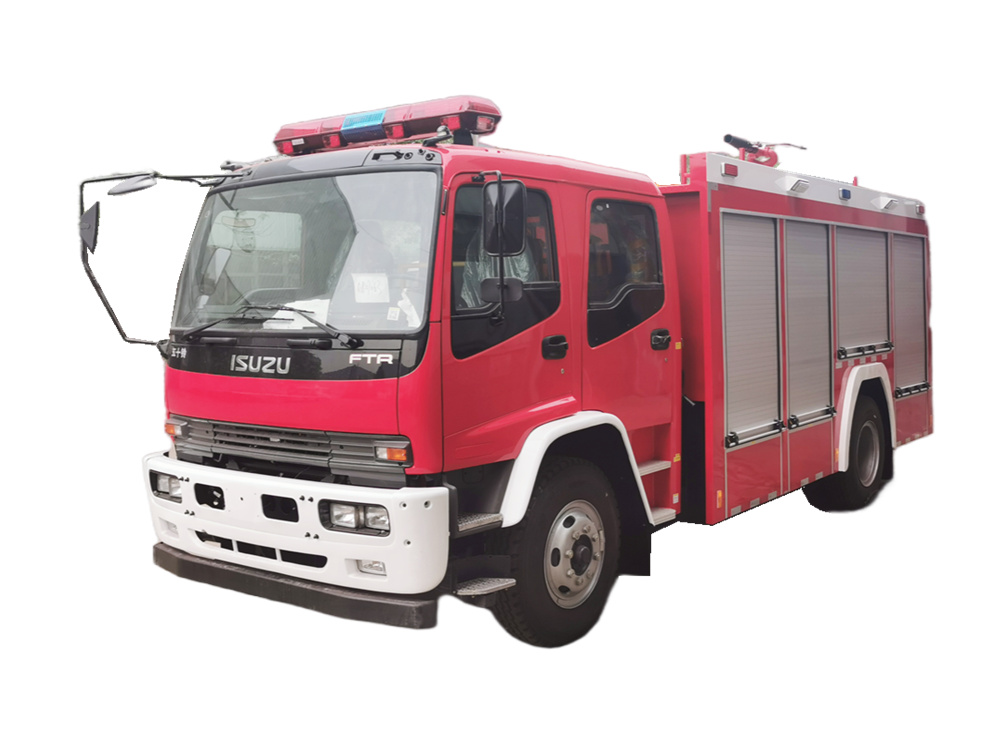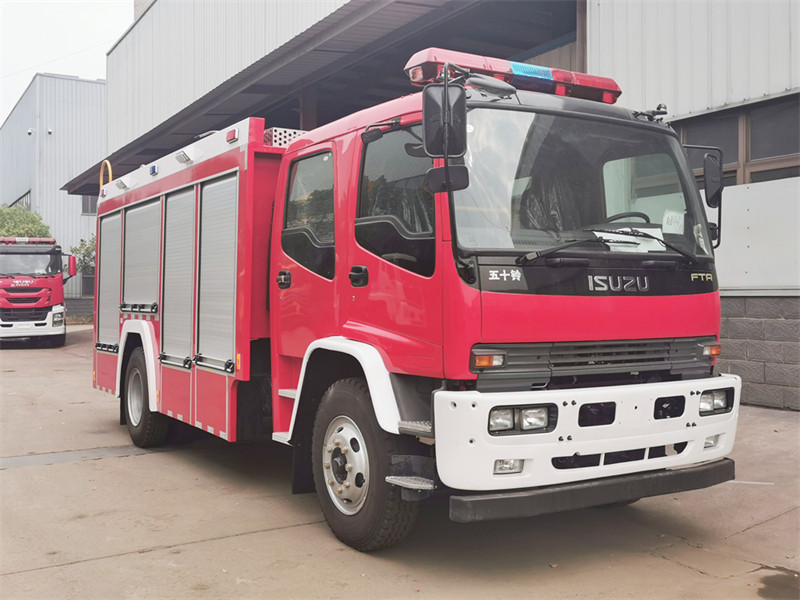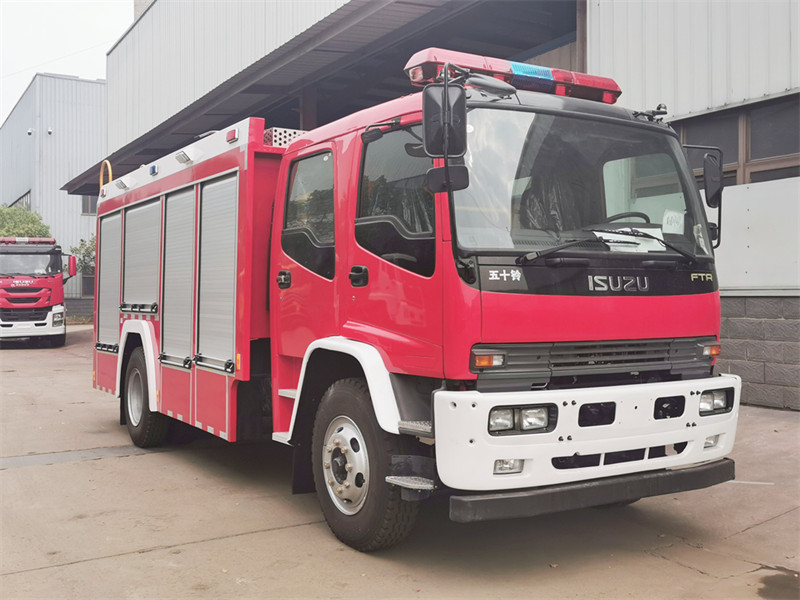Work capacity:
6000 litersTruck model:
PT5060GXFPEngine power:
205HPEngine type:
4HK1-TC50Axle drive:
4×2Gear box:
ISUZU MLD, 6-speed, manualRemarks:
Large tank capcity, high payload capacityFoam fire trucks play an important role in fire rescue, especially in extinguishing special types of fires such as oil or forest fires. The Isuzu FTR foam tender fire truck is equipped with an Isuzu diesel engine, which has strong power and low fuel consumption, ensuring rapid response in complex terrain and harsh environments.

In terms of upper body, the vehicle is equipped with a large-capacity water tank, a foam tank and a high-efficiency fire pump and fire monitor, which can quickly provide a large amount of fire-fighting water and improve fire-fighting efficiency. Equipped with an advanced foam fire extinguishing system, it can quickly spray foam fire extinguishing agent onto the fire source, effectively reducing the intensity of the fire and preventing the spread of the fire. The cab is equipped with advanced communication equipment to enable firefighters to maintain communication with the command center and other firefighting vehicles to better coordinate fire-fighting operations.
Isuzu FTR foam firefighting trucks have a wide range of uses. They are not only suitable for extinguishing large-area fires in forests, grasslands, etc., but can also be used for rescue operations in urban high-rise building fires.
Product Parameters
ISUZU FTR foam fire engine specifications
Vehicle name
ISUZU foam tender fire truck
Overall Dimension (mm)
8280×2500×3470
Vehicle Model
PT5060GXFP
Wheel base (mm)
4500
Traction system
4*2
Gross Weight (kg)
16000
Cab Capacity
2+3
Curb Weight (kg)
8050
Transmission
manual
Front Track (mm)
1910
Chassis Brand
ISUZU
Rear Track (mm)
1800
Tyre Model
10.00-20
Approach Angle (°)
26
Quantity of Tyre
6+1
Departure Angle (°)
13
Quantity of Axles
2
Front Overhang (mm)
1250
Max Speed (km/h)
90
Rear Overhang (mm)
2160
Chassis
Chassis Model
QL1160VMF
Leaf Spring
7/7+5
Engine (Motor)
Brand
ISUZU
Type
Diesel
Model
4HK1-TC50
Displacement (ml)
5193
Power (kw)
205
Emission standard
Euro 5
Equipment
Water Tank Capacity
5000 L
Tank Material
carbon steel
Foam Tank Capacity
1000 L
Tank Material
stainless steel
Nozzle Pressure
1.0 Mpa
Water Flow Speed
60 L/s
Low Pressure Pump
CB10/60
Range (m)
water≥65m, foam≥60m
REMARKS:
The cab is in general complete steel frame welding structure. The tank is
made of qualitative carbon steel material, thickness 4mm, preservative treatment,
durable in use. Aluminum alloy roller shutter door can be easily operated
with small noise.
The fire truck is equipped with PTO indicator light, 100w alerter, LED alarm
lamp, identification lamp, clearance lamp and rear lamp. Besides, the fire
fighting apparatus such as suction pipe, water filler, fire hose, hose
adapter, pickax, spade etc. are equipped.

Foam Fire Truck Maintenance Tips
As the main vehicle for firefighting, foam
fire trucks must be maintained in accordance with the requirements stipulated
in national standards or industry standards. It is important to do maintenance
and upkeep based on the actual conditions of foam operation and use. In terms
of daily maintenance, in addition to routine maintenance of the car's engine,
chassis and other parts, the following maintenance work also needs to be done.
1. Rinsing after foaming work
In order to ensure that the fire pump can
work reliably, it is very important to flush the fire pump, diversion pump, and
foam proportioning mixer after each use of foam or salty water to extinguish a
fire: connect the water treatment pump to the outlets on both sides of the fire
pump, and connect the external foam suction pipe and put it into the clean
water; after running the pump to bring in water, use low pressure to work and
open the foam operating valve; open the water pump outlet, adjust the speed,
and increase the pump pressure to a maximum of 0.5MPa; after completing the
flushing, adjust the fire pump, adjust the speed so that the outlet pressure is
lower than 0.2MPa, and turn on the water diversion switch of the pump until
clean water flows out of the exhaust pipe.
2. Other maintenance precautions
